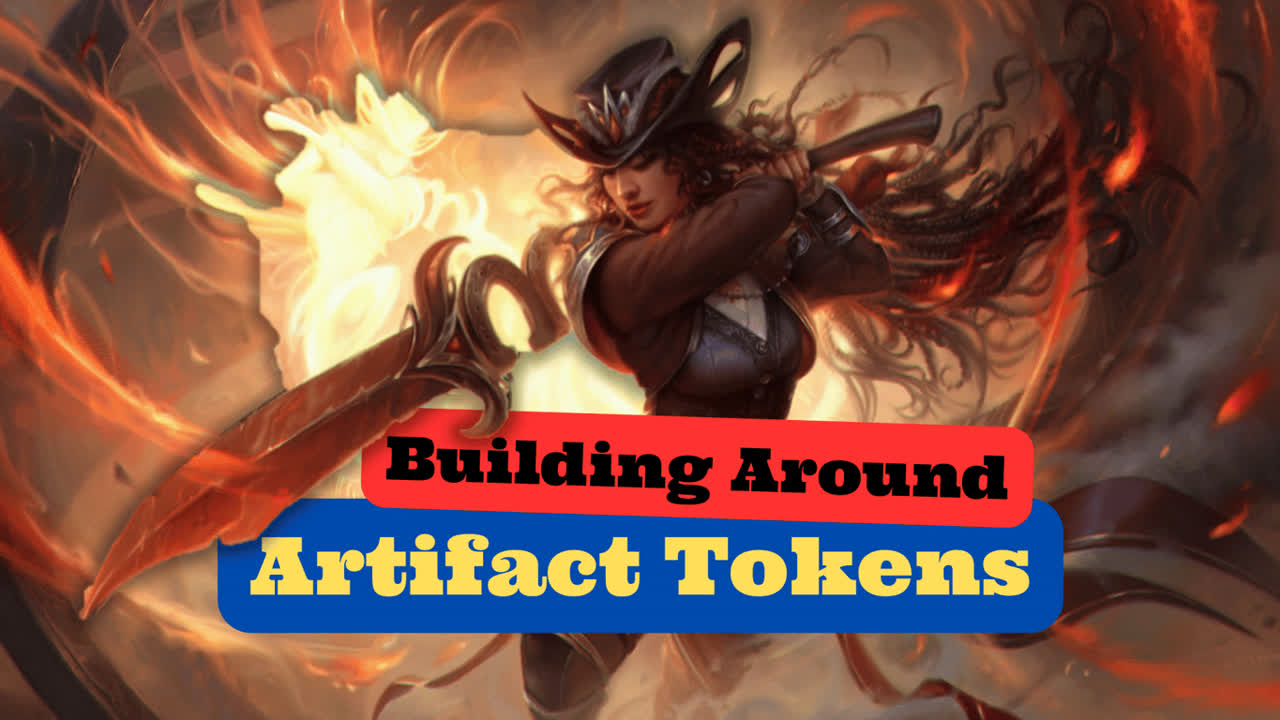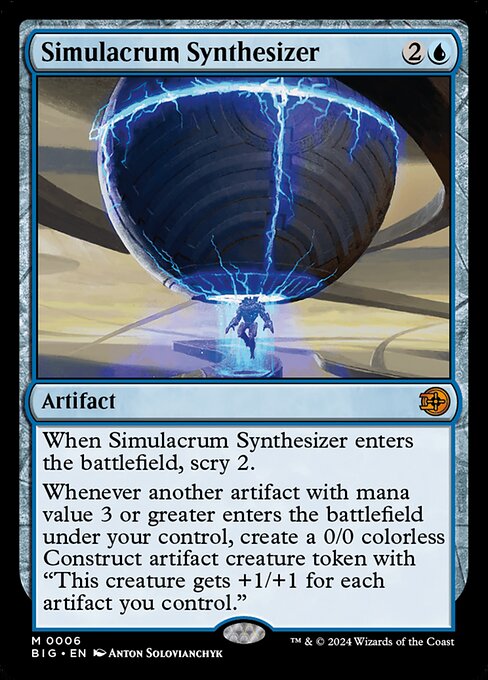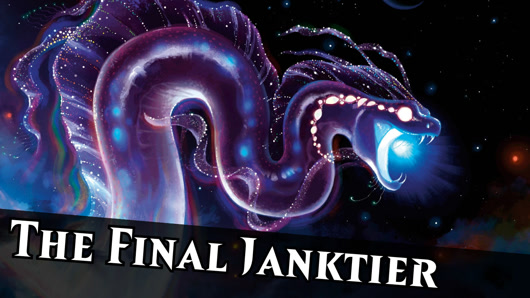Why is this Deck?
Outlaws of Thunder Junction is coming to Arena in just over a week (Tuesday, April 16th) and I wanted to do some preparation to make sure I have some jank ready to go to test when the time comes. Normally for these articles, I like to end with a link to the deck in action, but, for obvious timing reasons, that won't be an option today. That said, you will be able to see this deck in action on my Twitch stream as early as this Wednesday (April 10th) for the Outlaws of Thunder Junction Streamer Event!
This new set contains a myriad of powerful build-arounds, and one present theme in the Big Score bonus sheet is artifact tokens. A number of cards generate them, and a handful of cards even allow you to copy them, so I decided to collect 60 of these cards into a playable maindeck that, hopefully, can show off this mechanic.
The Star of the Show
When I first conceptualized this deck, Simulacrum Synthesizer was added as a means to create a single large construct token, but as I continued to tinker, I realized this card is priced to move at only three mana. Honestly, I suspect it will be the strongest card in the entire deck as both an enabler and a key engine in its own right. The deck contains a lot of three-plus mana artifacts, and every time a copy is made of an existing artifact that has a mana value, Simulacrum Synthesizer will trigger and create a fairly large body. Also, it isn't legendary, so additional copies of the synthesizer will result in multiple triggers.
Honestly, this card reads like it will punch above its mana value, so keep an eye out for it.
Copy Enablers
From Outlaws of Thunder Junction, we get Esoteric Duplicator as well as Oltec Matterweaver. Esoteric Duplicator is a little pricey for what you get; however, it is a clue that can draw cards and generate copies of itself. If mana is prevalent, if we sacrifice other artifacts, we can simply get copies of them delivered to us on the end step for a mere two mana investment. In this particular build, we don't have enough creatures for Oltec Matterweaver to trigger consistently, but as a two-of, it has an opportunity to give us a boost to the finish.
Molten Duplication is another card from the new set that slots into this deck so perfectly, I'd say it was made for it. It can create copies of either an artifact or creature to trigger our Simulacrum Synthesizer (even if the original target isn't an artifact) and give us token artifacts to copy for Oltec Matterweaver or our Worldwalker Helm. Worldwalker Helm, only costing two mana to activate, also represents possible crazy value as it can copy our construct tokens and also create a lot of maps to help grow those construct tokens.
Powerful Cards That Never Found a Home
Jhoira and Saheeli are both two-drop cards that read, to me, like powerful setup pieces in the right shells. Saheeli is Molten Duplication on a repeatable body while Jhoira represents repeatable free artifact drops as you curve out with other threats. Neither of these cards has made any impact in Standard because they don't provide immediate value when they arrive on the field, are easily removed, and haven't had an artifact-themed deck where their particular skills would stand out.
This deck seems like a good fit for these two ladies, and I believe it merits experimentation. I fully accept they might get cut as underperformers in future builds, but I'm hopeful.
Urza's two meld pieces from The Brothers' War have seen play in other builds but rarely work together these days. Planeswalker removal has become very accessible and minimized the value of flipping this meld. Well, in this deck, we likely won't be flipping Urza either, but both pieces are independently strong, so we can always use the meld as a fine backup plan. Urza represents cost reduction for all our meaningful card types, and the stones are a powerful artifact that ramp us into additional artifacts while also having a powerful ETB that could be worth copying when our hand is low or we need to remove a pesky creature from the opposite side of the board.
Removal
All of this theory-crafting will be for nothing if we're simply killed before we get a chance to set up, so we need to have a decent removal package. Assimilation Aegis is a new artifact from Thunder Junction that lets us exile our opponent's largest threat and then, for only two mana, transform one of our creatures into it. Against Domain or similar ramp decks, stealing and cloning an Atraxa, Grand Unifier sounds like a pretty sweet plan to me. Additionally, the Aegis is a three-drop artifact and triggers all the things we're doing.
Unstable Glyphbridge is a borderline playable sweeper from Lost Caverns of Ixalan that just happens to synergize with what we're doing by being an artifact. Having this on board also turns our Molten Duplications or Saheelis into additional board wipes.
In Conclusion
This is the point in the article where I want to share my final thoughts and how I'd like to modify the deck moving forward, but without having played it just yet, that's not a possibility. I'm hopeful because the synergies are so strong that this has a chance to shine. Some potential issues I see are not having enough interaction, and also not having enough plays prior to turn three to be competitive given current Standard. A few counterspells or cheap removal spells (Voltage Surge comes to mind) will likely fix that and will no doubt be added when I identify the underperforming cards and iterate moving forward.
If you'd like to see that iteration, again, please check out my Twitch stream on 4/10 to see this deck as well as other Thunder Junction brews in action. If you want to suggest builds of your own, I try to keep up with chat, so I'm all ears.
I look forward to seeing you then! Happy brewing!



















